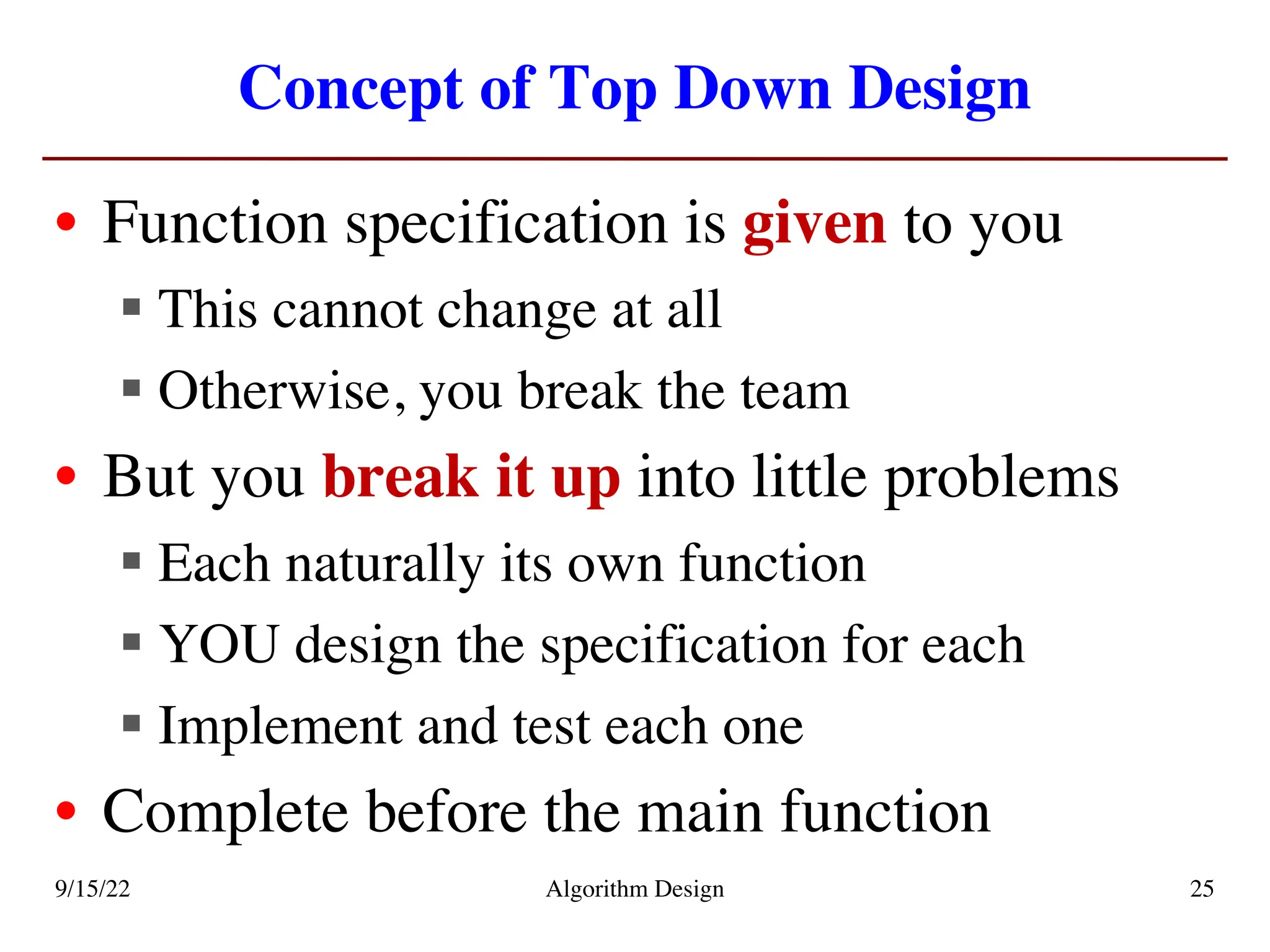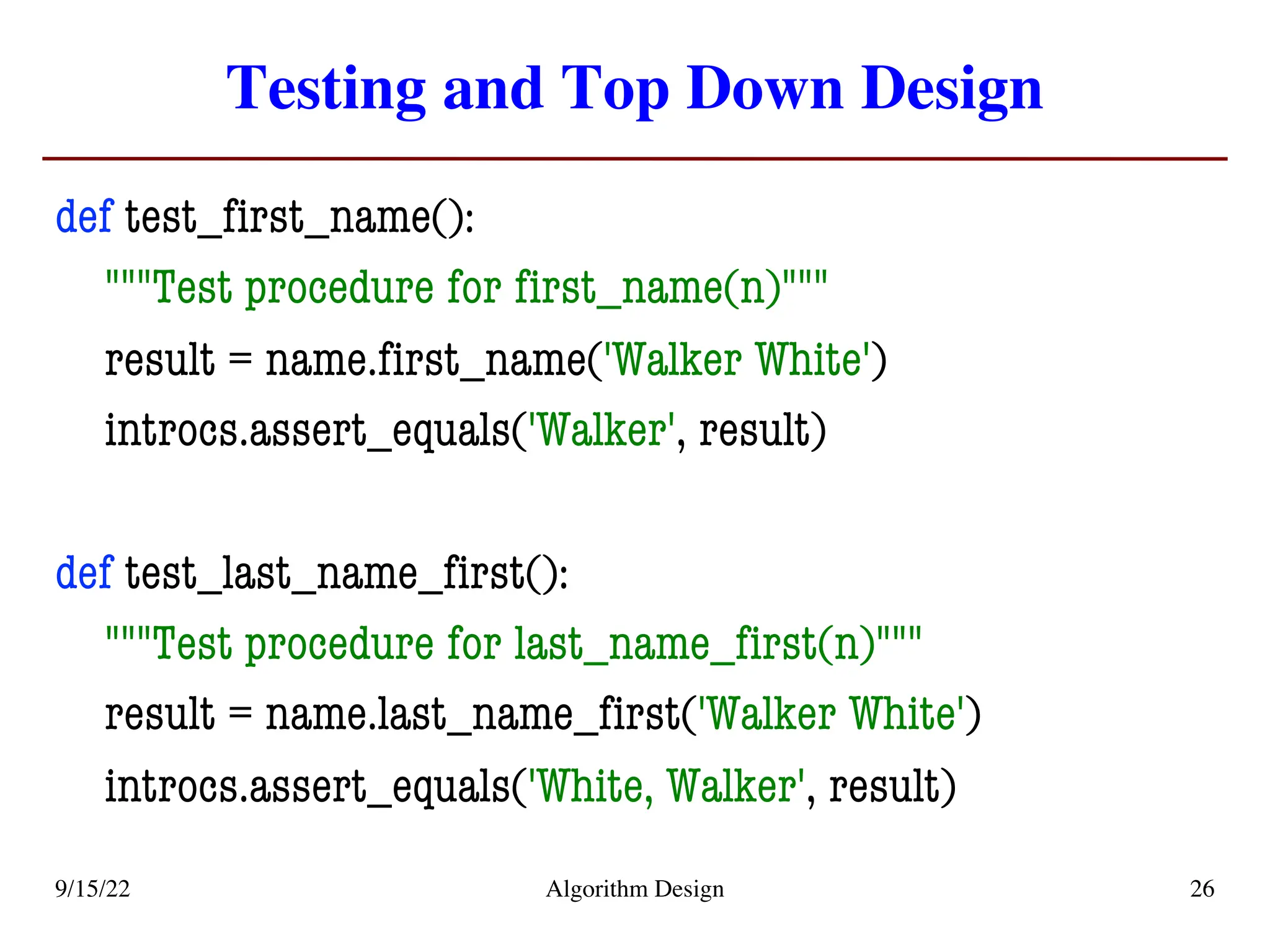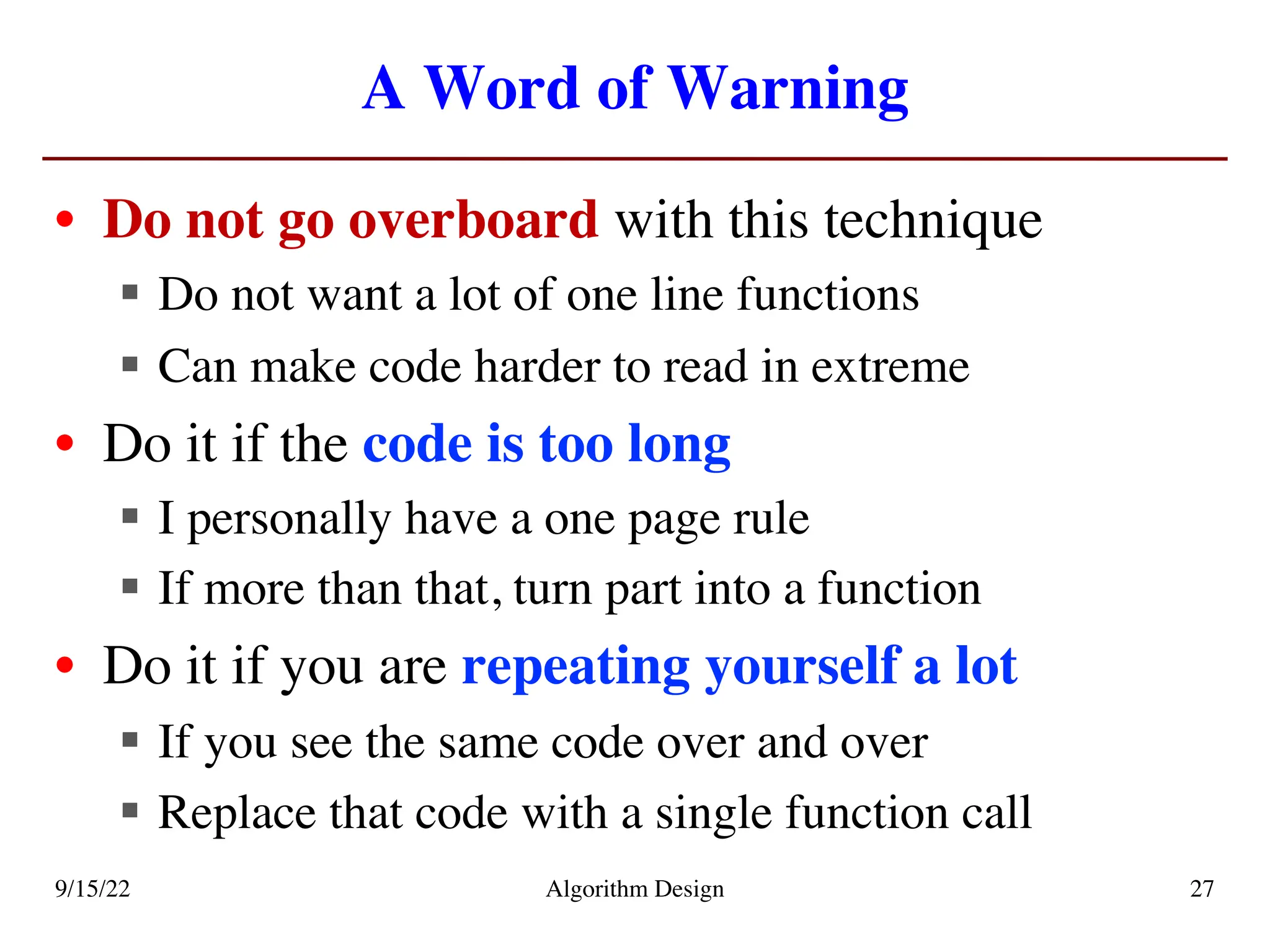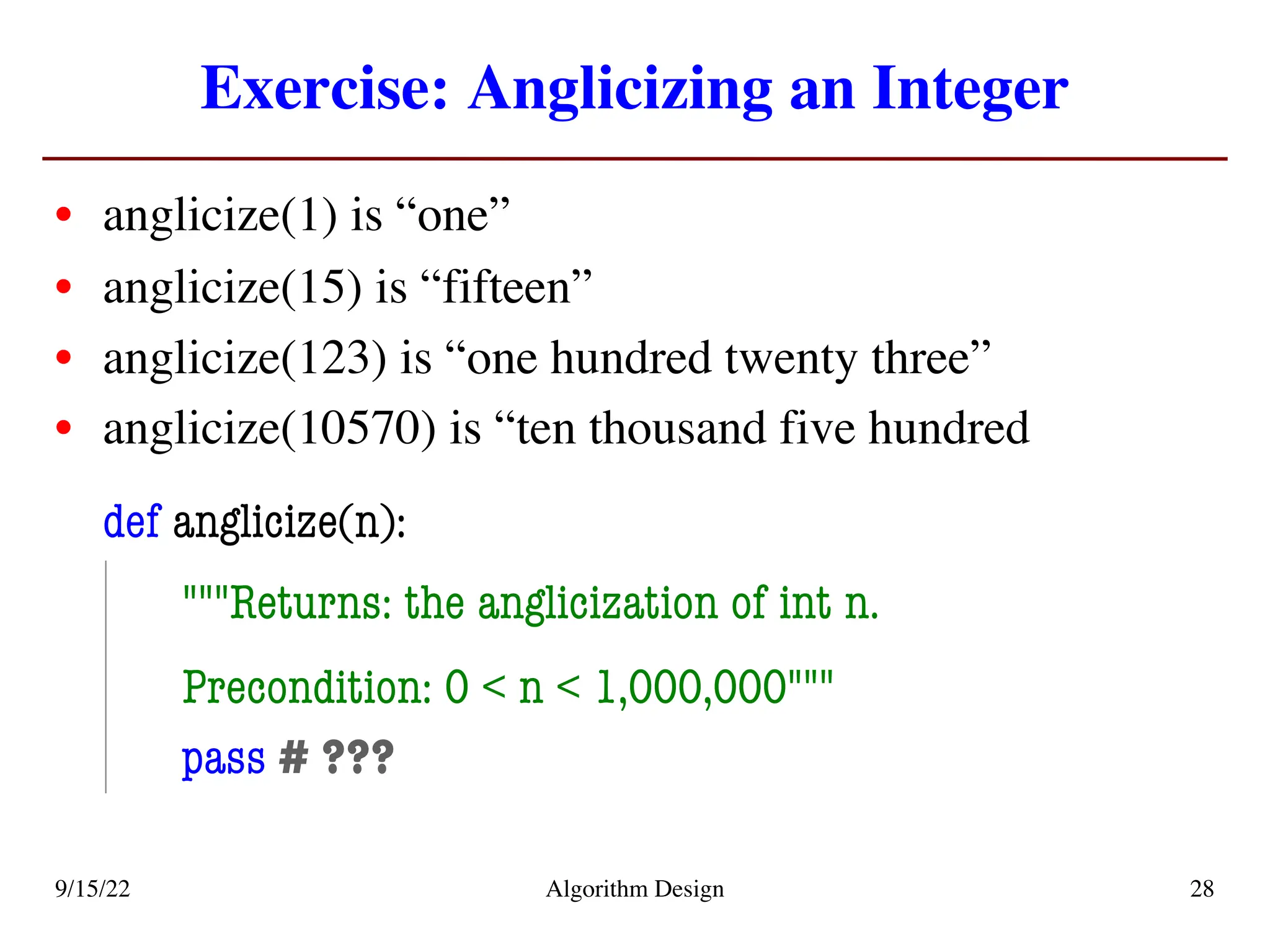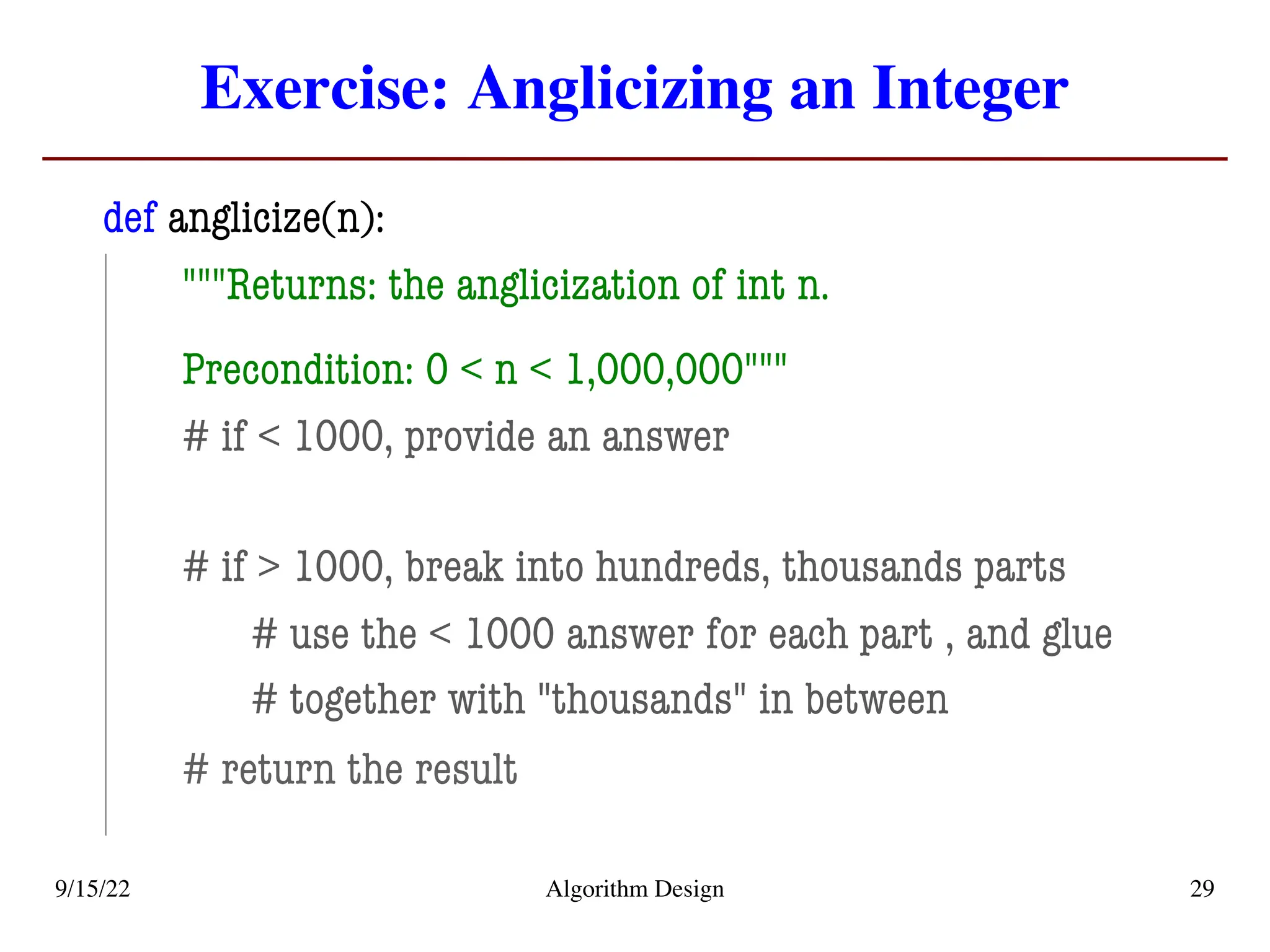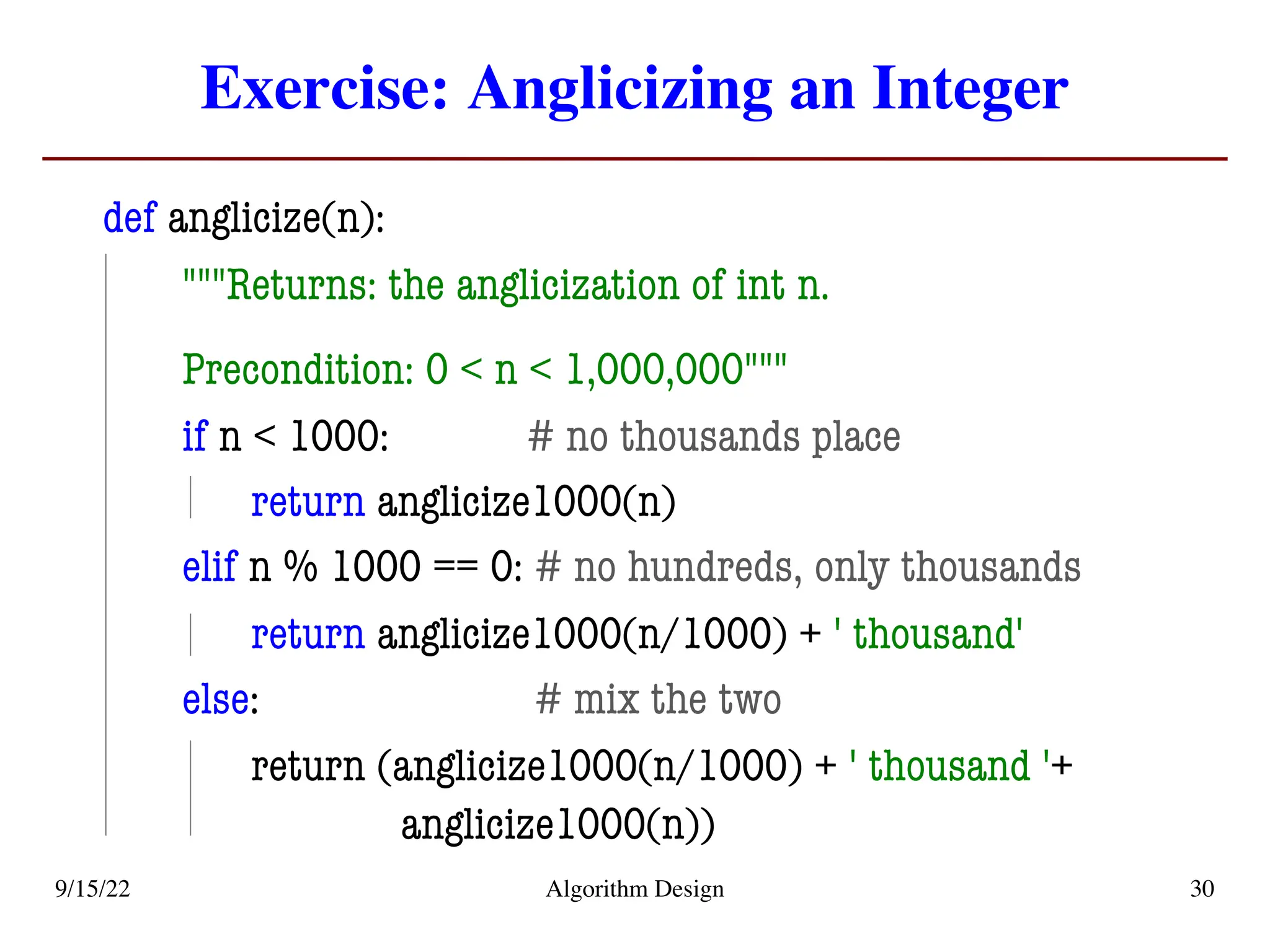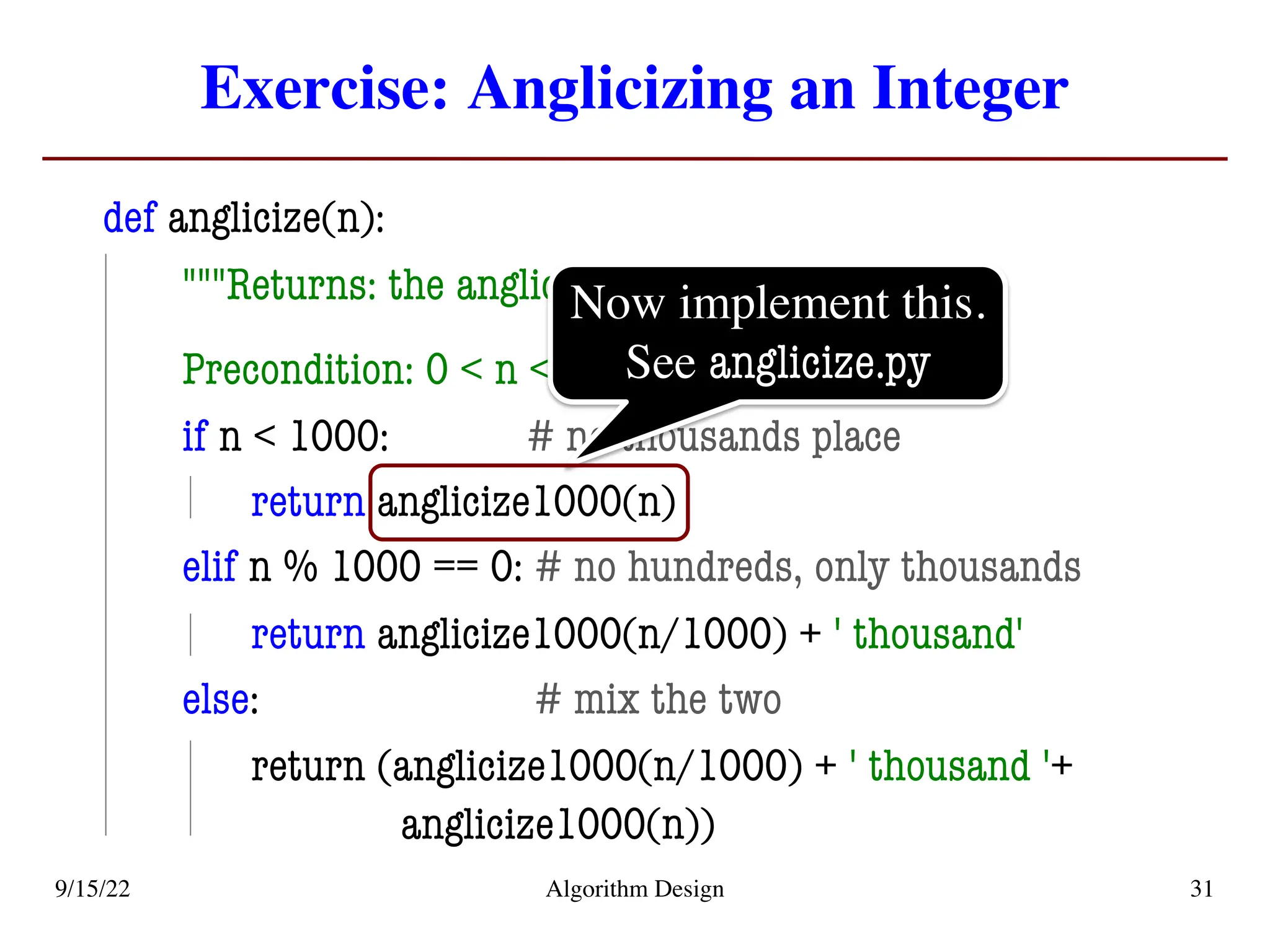This document outlines announcements and instructions for an algorithm design course, including assignment deadlines, grading, and lab assistance. It discusses techniques for effective programming, such as separating algorithm design from coding, writing tests first, and the use of function stubs. The document also highlights strategies for handling errors and breaking down problems into manageable functions.
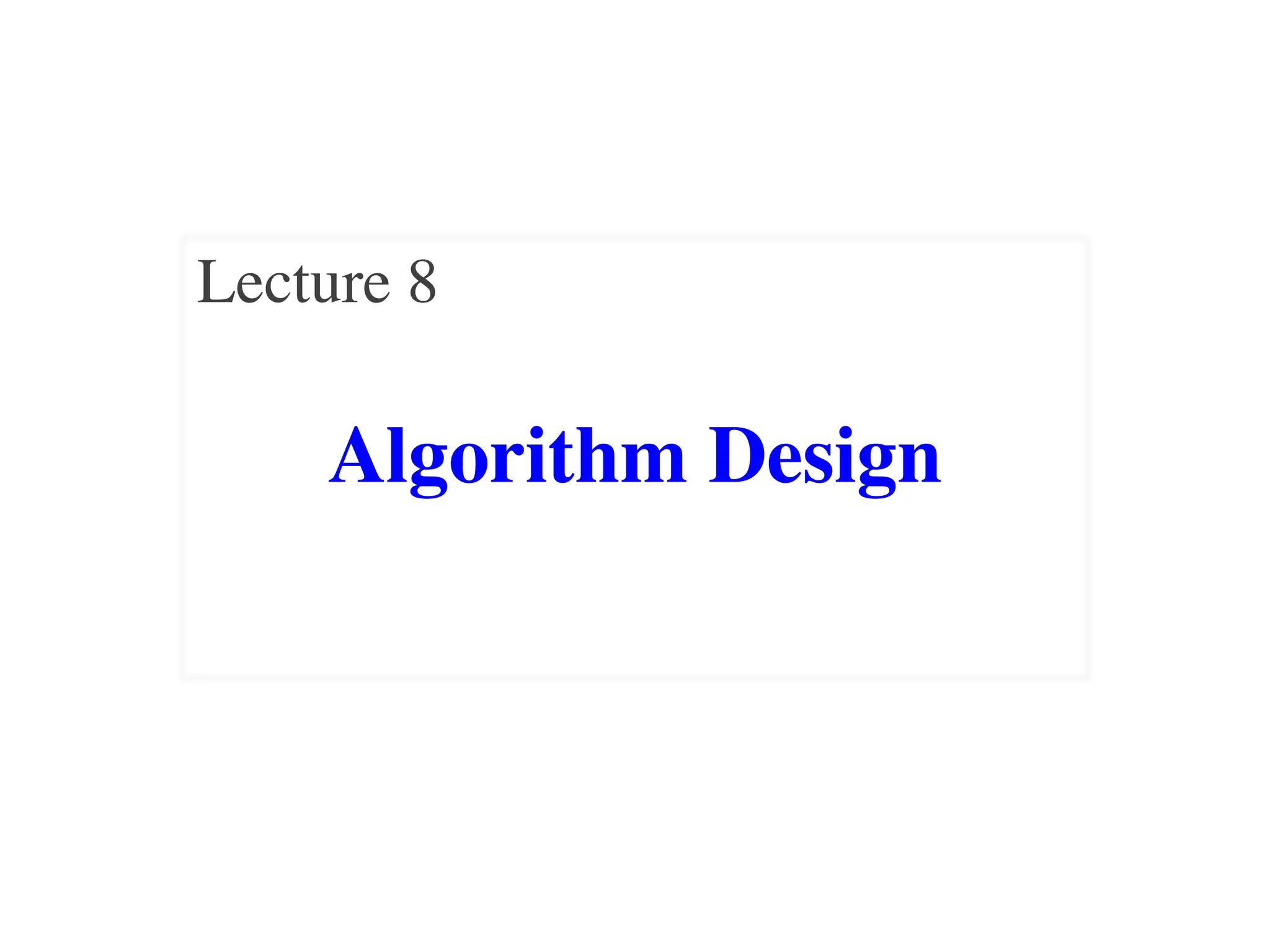
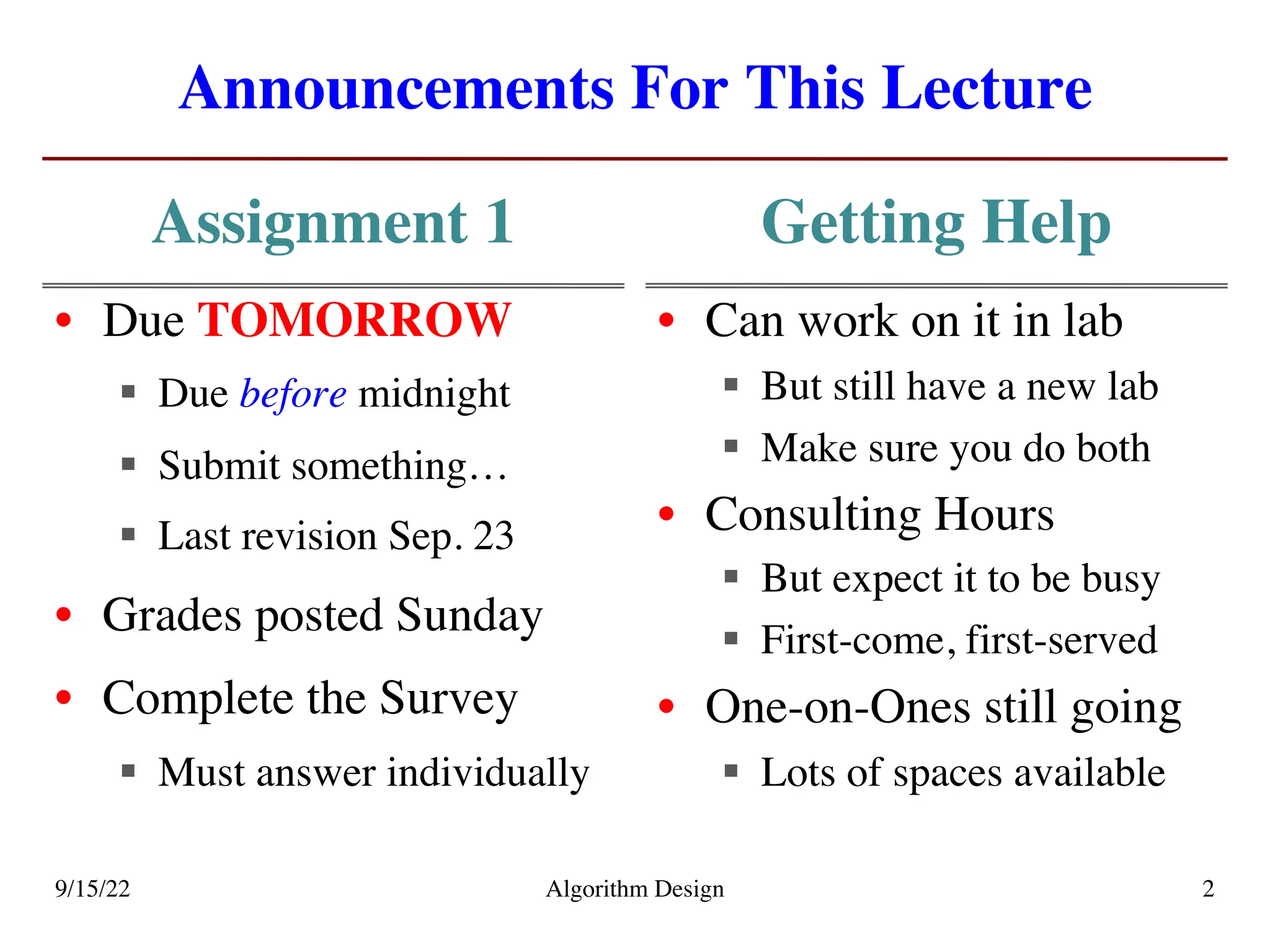
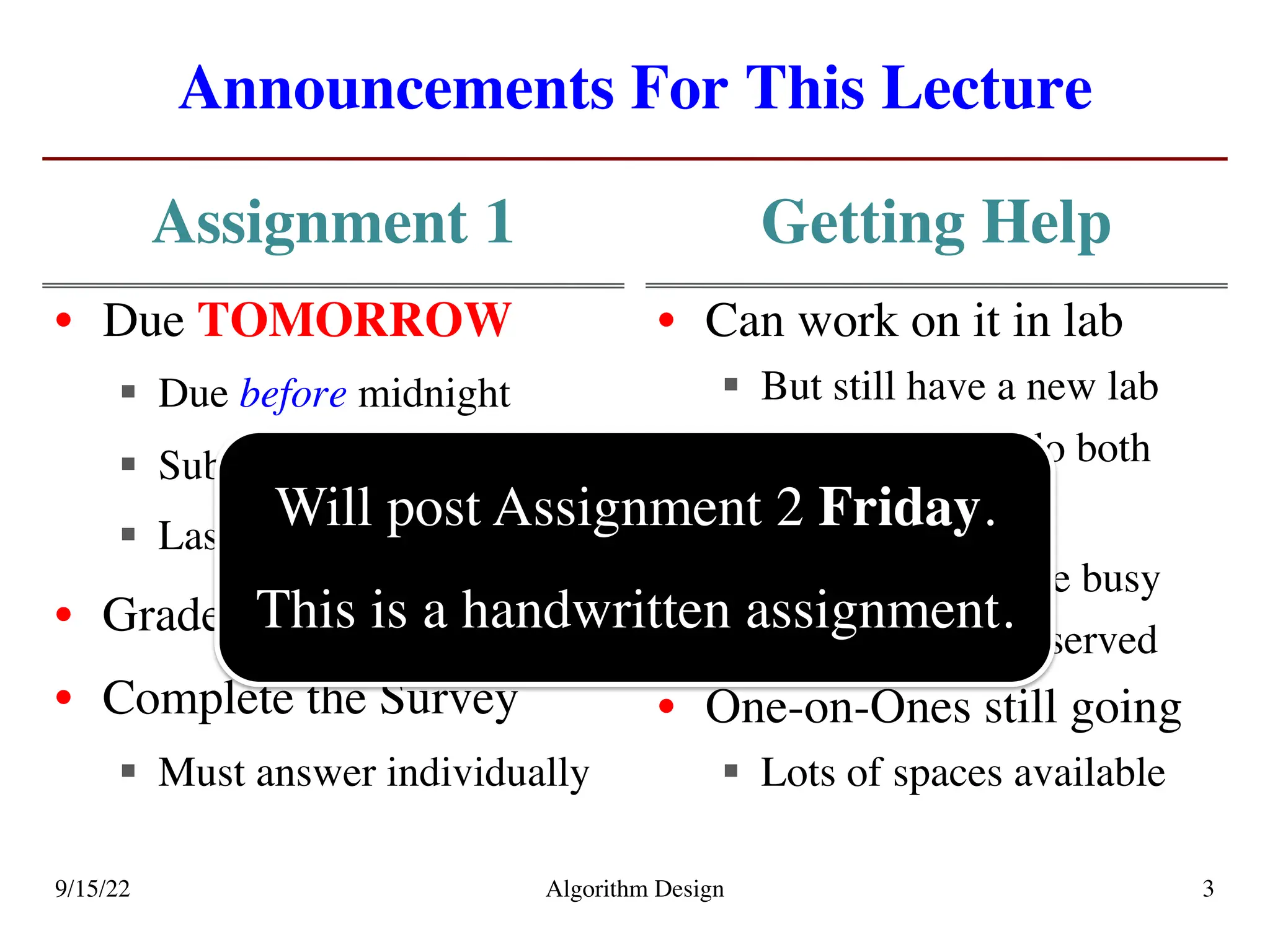
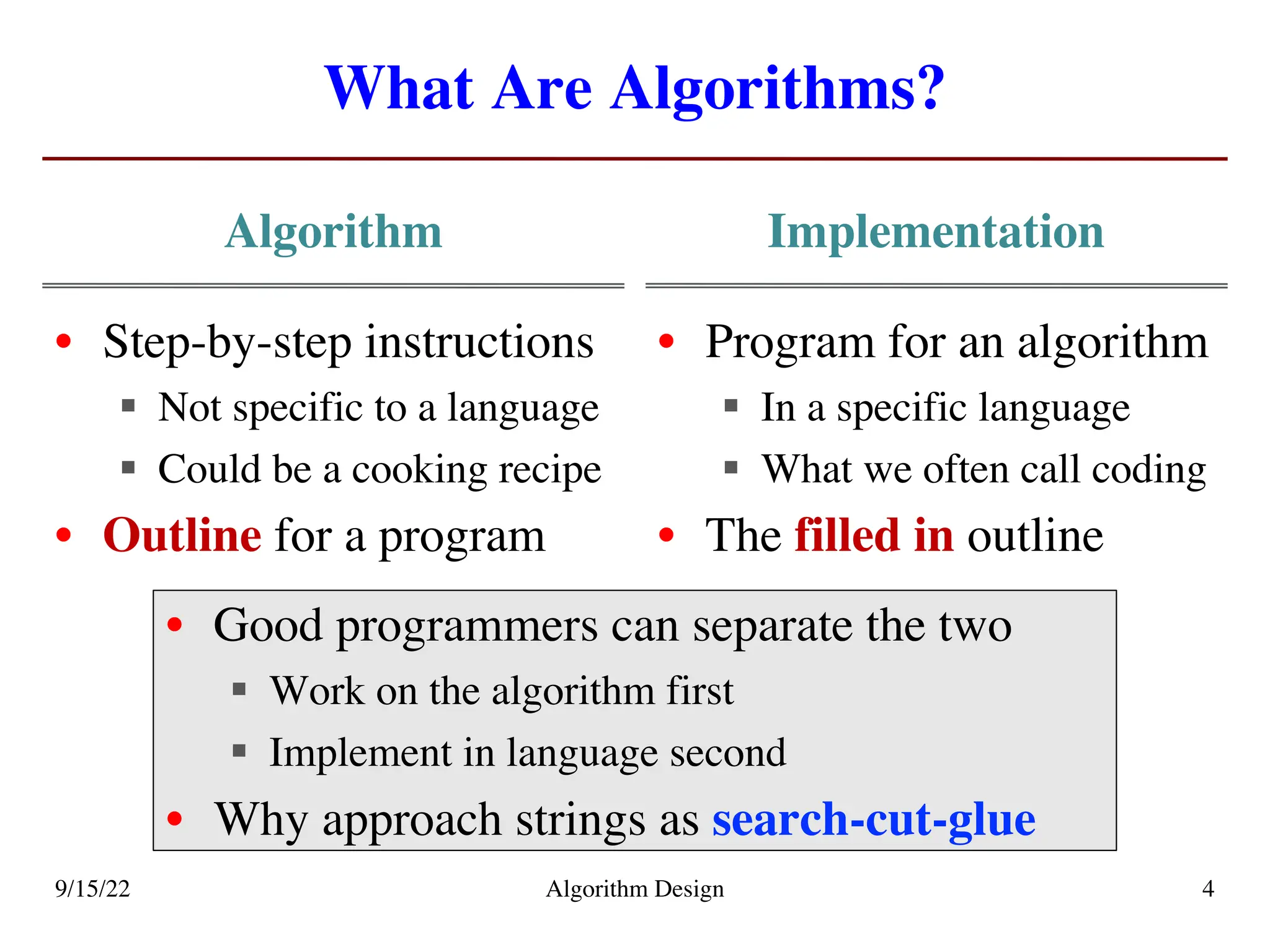
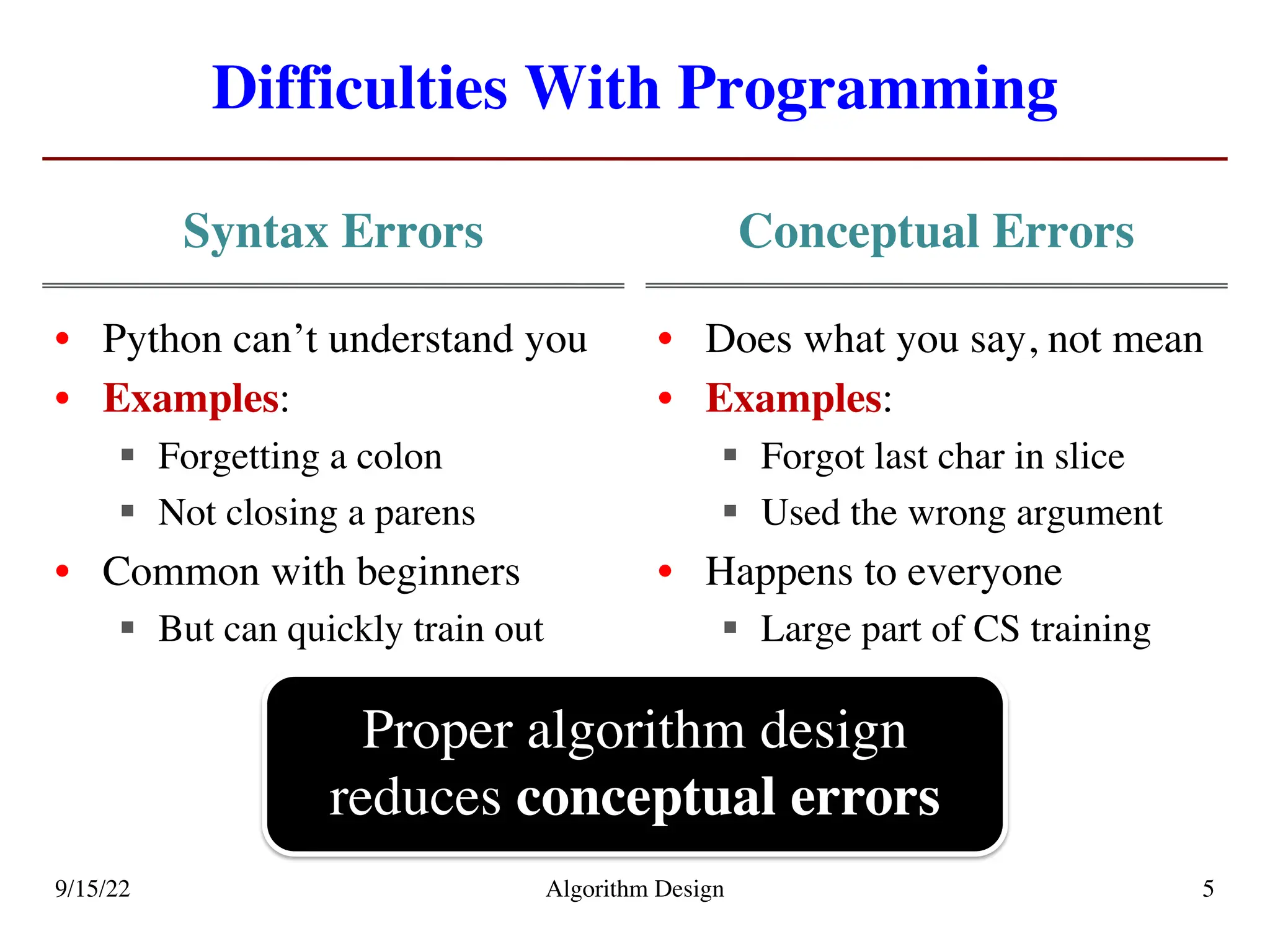
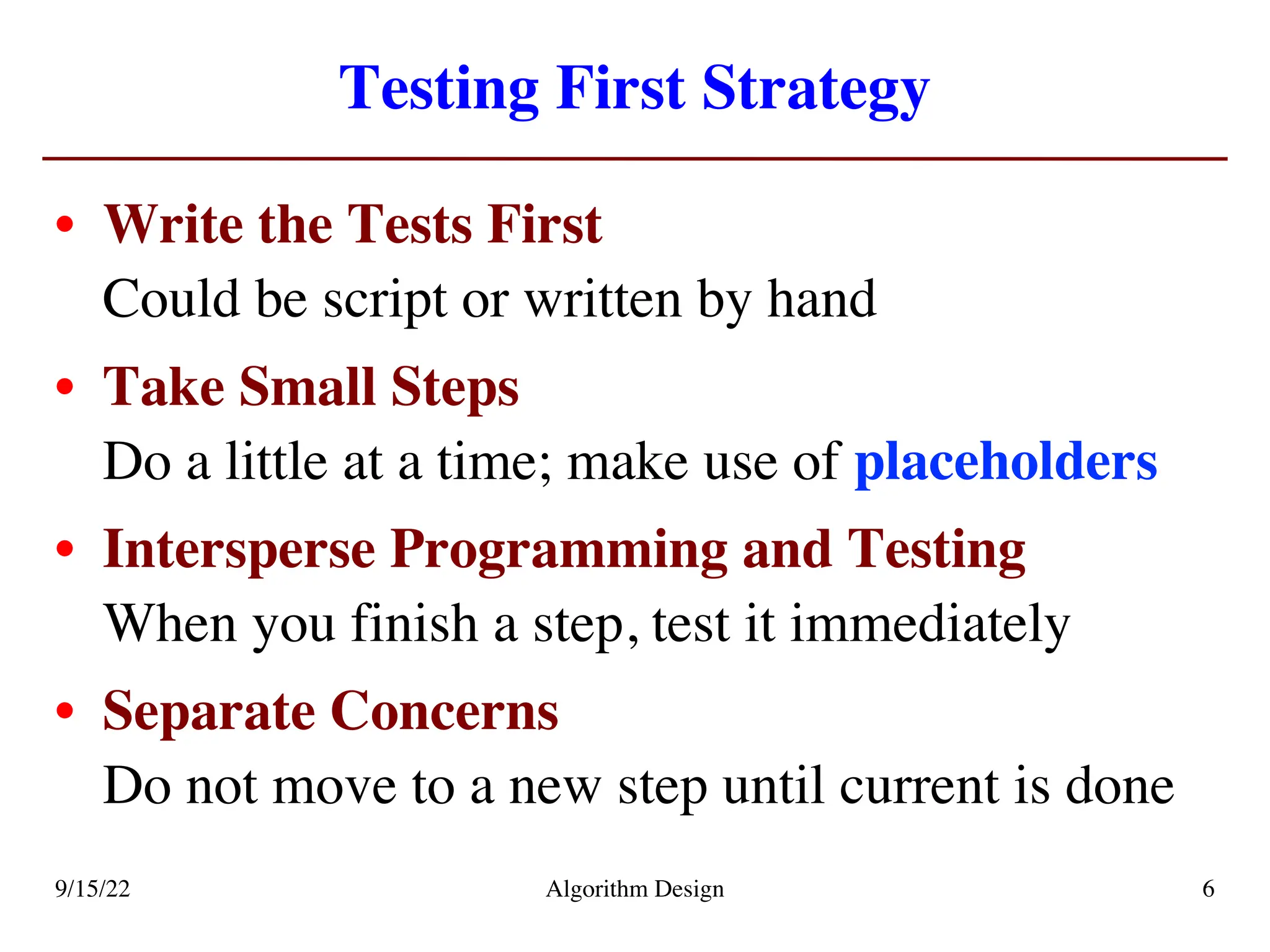
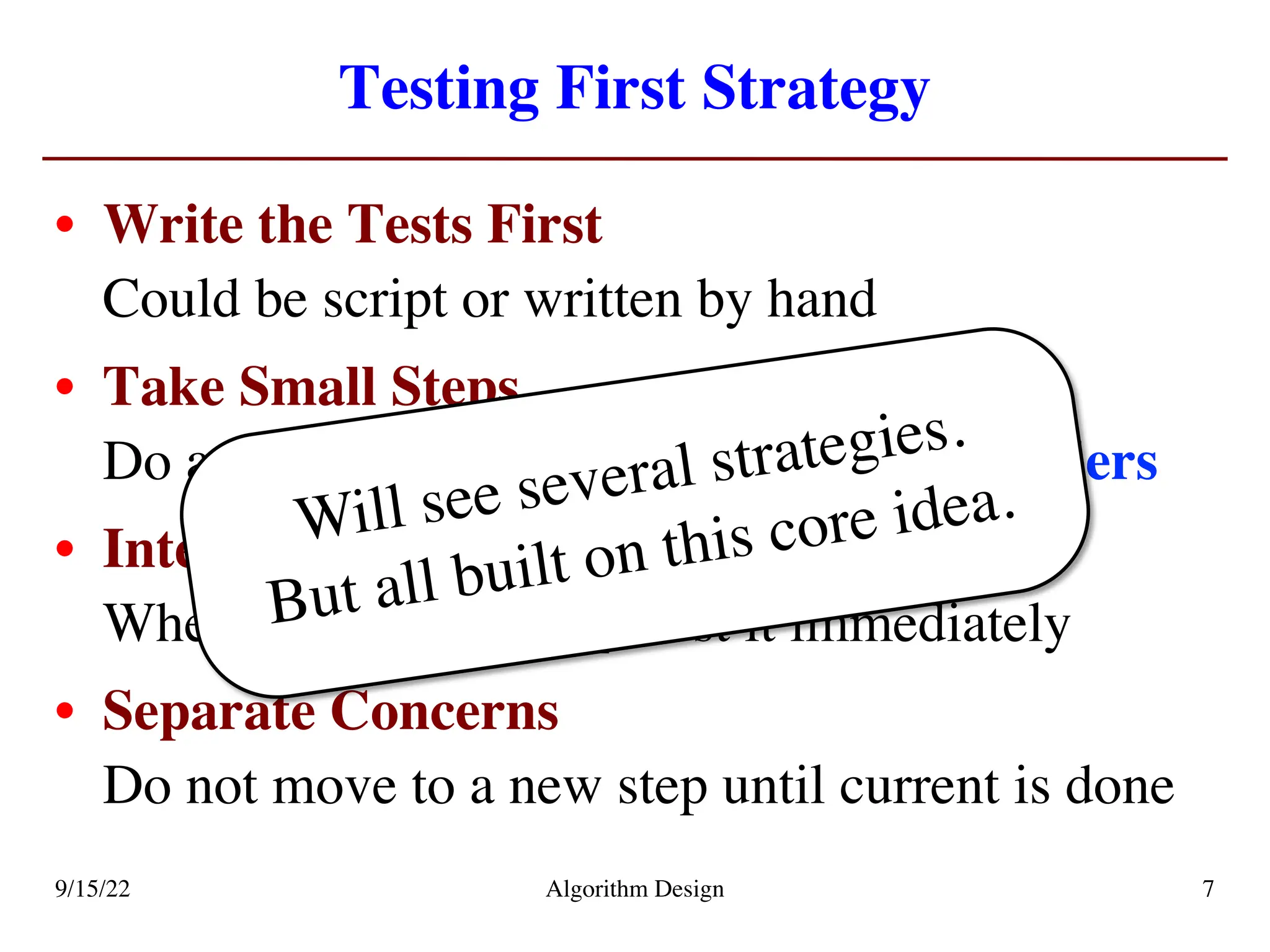
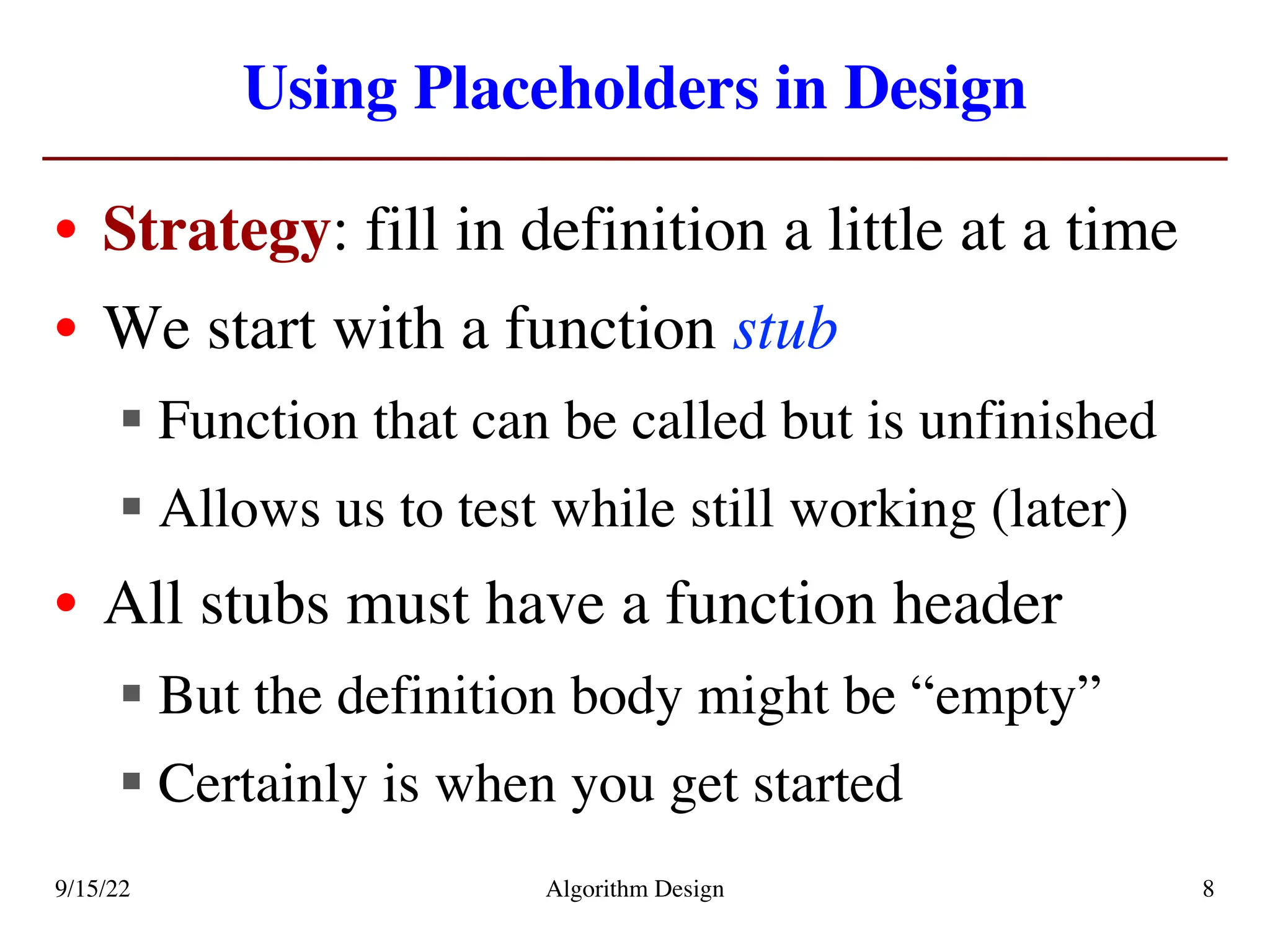
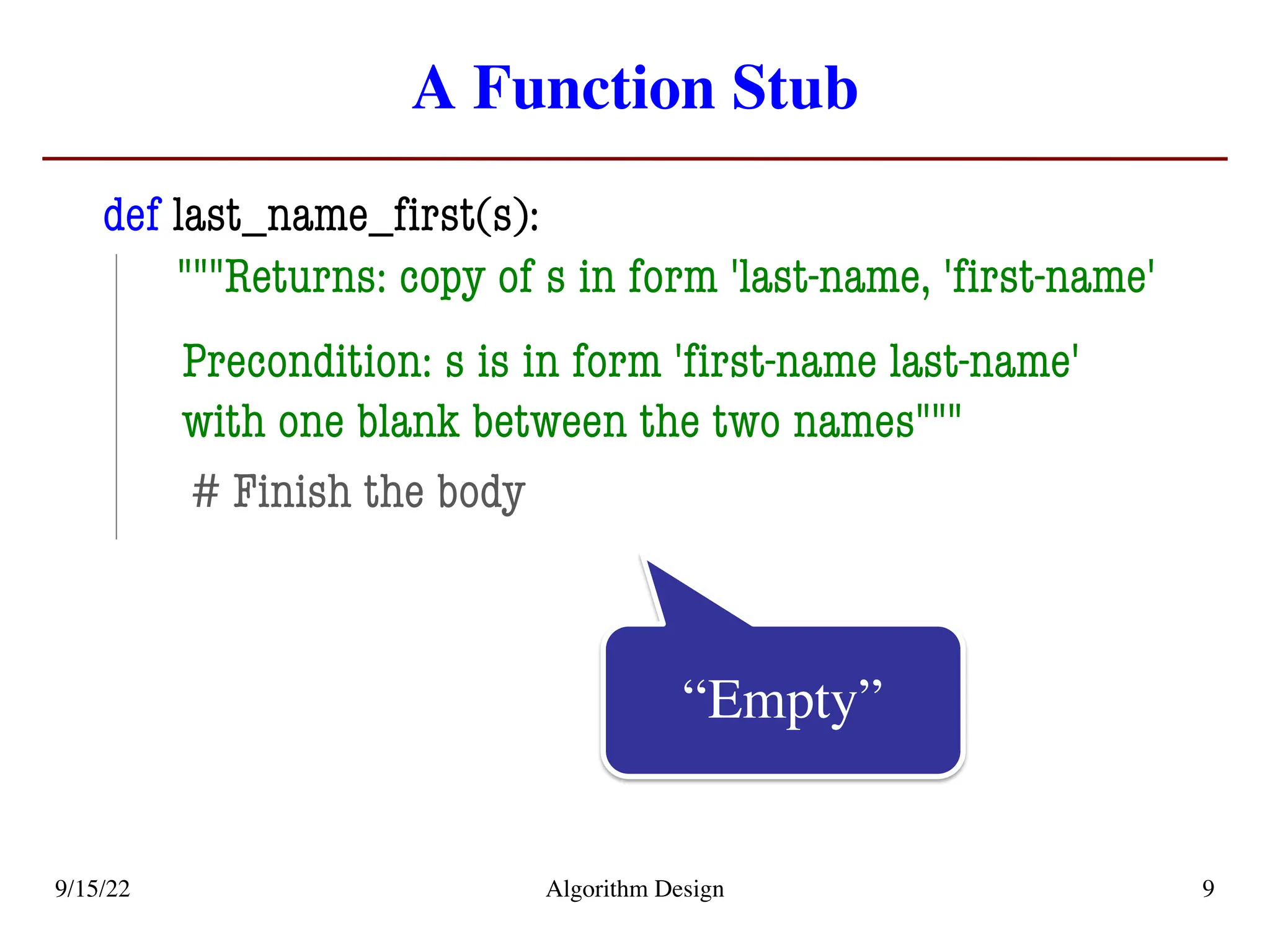
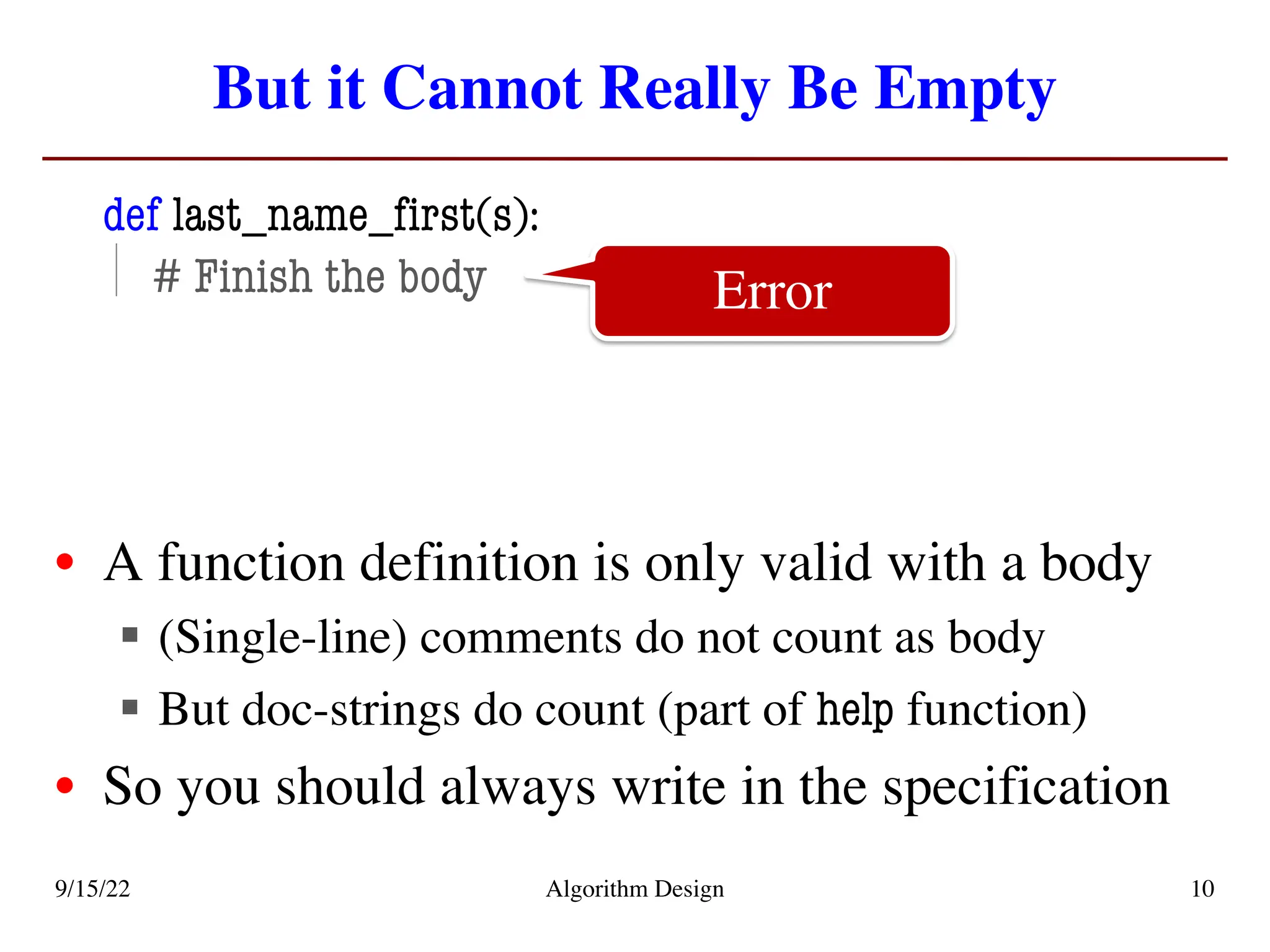
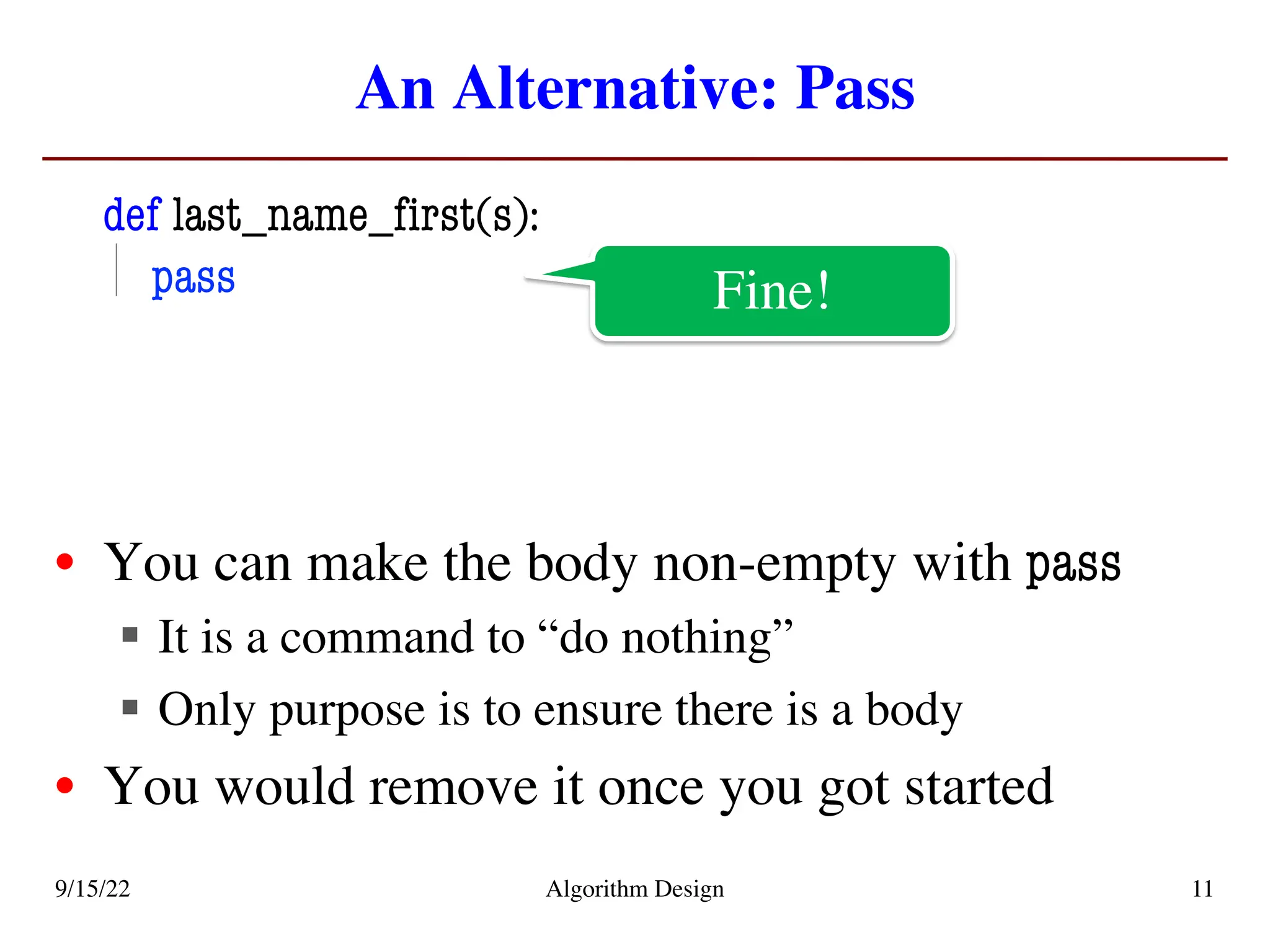
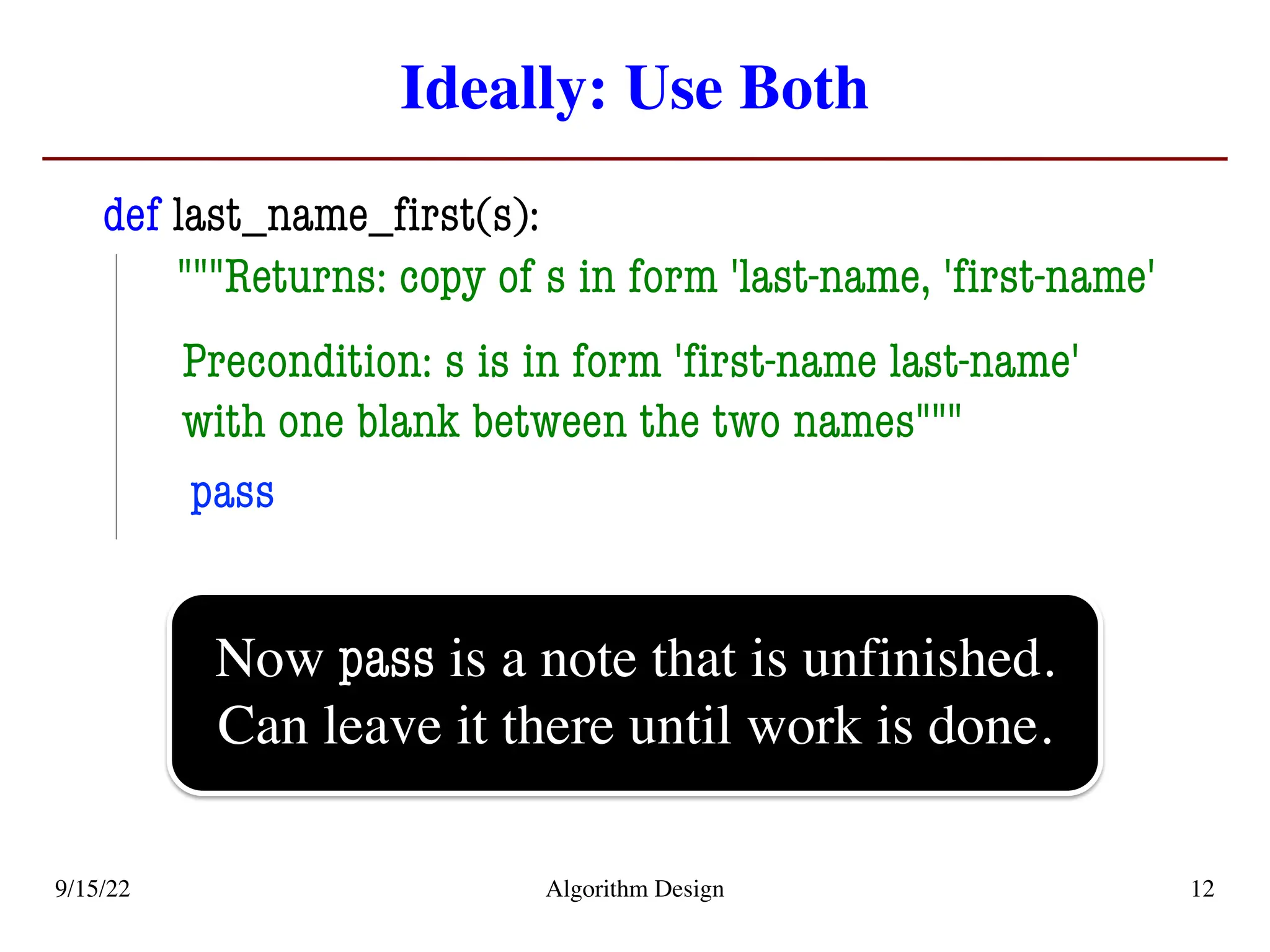
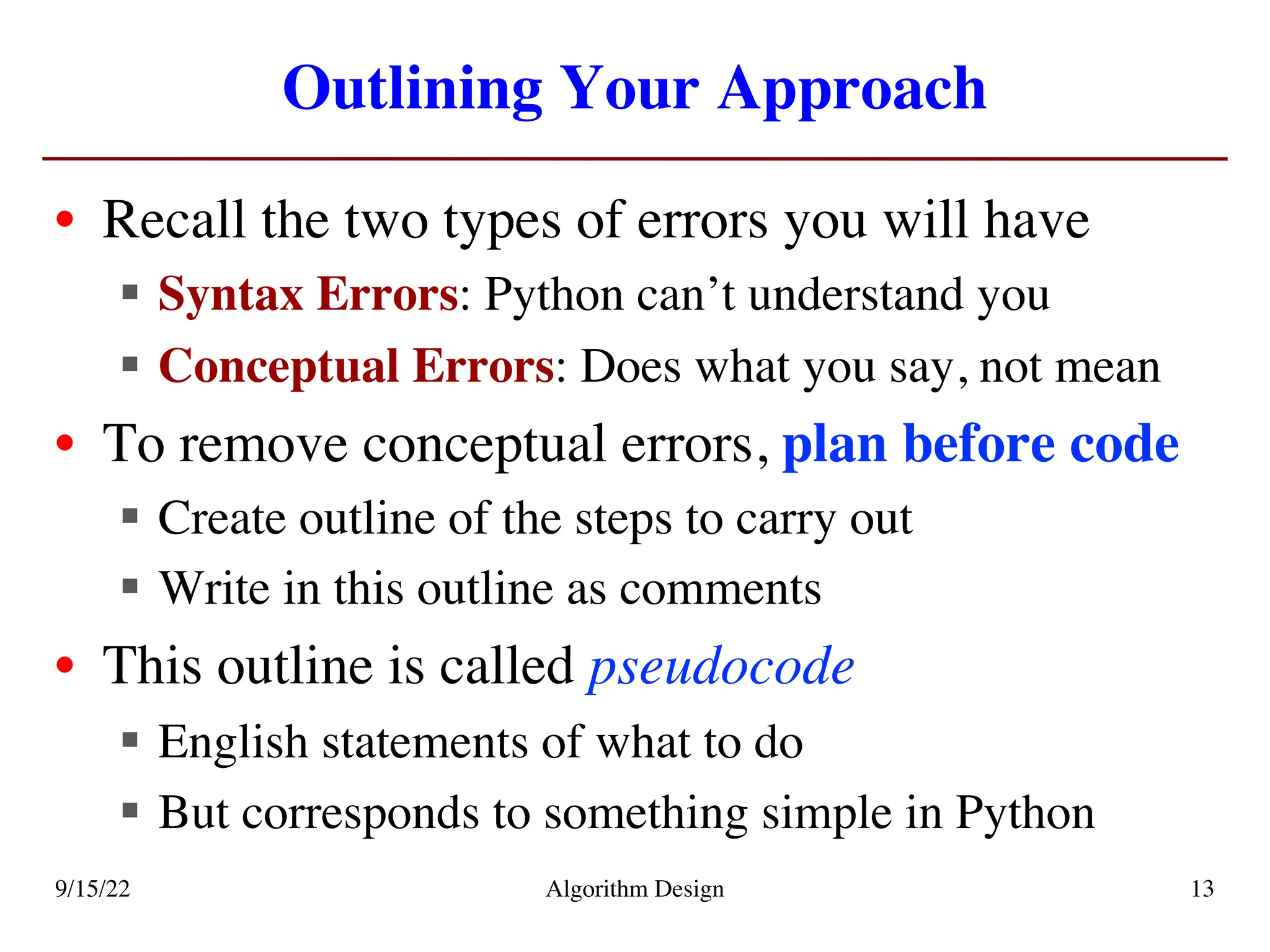
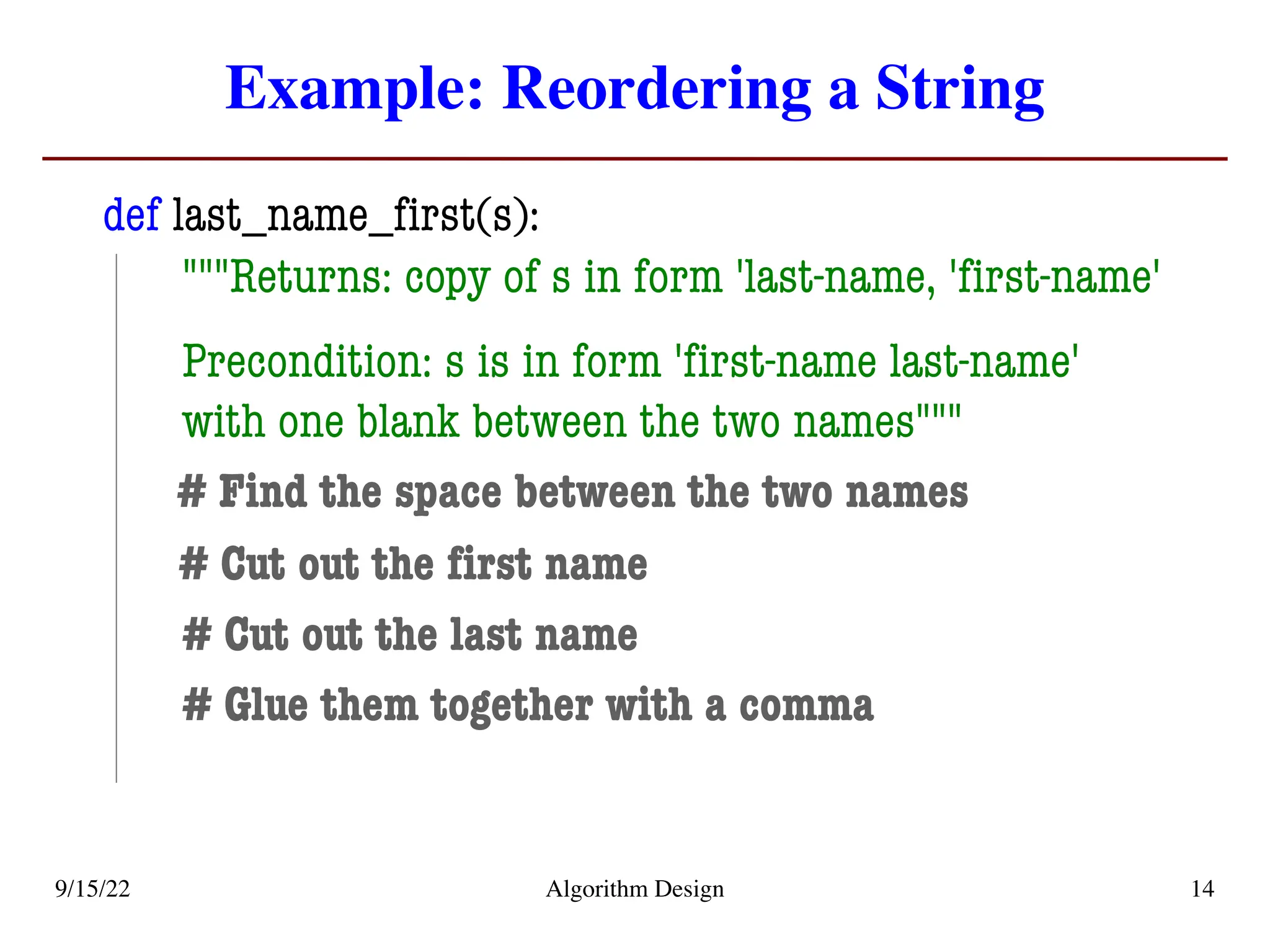
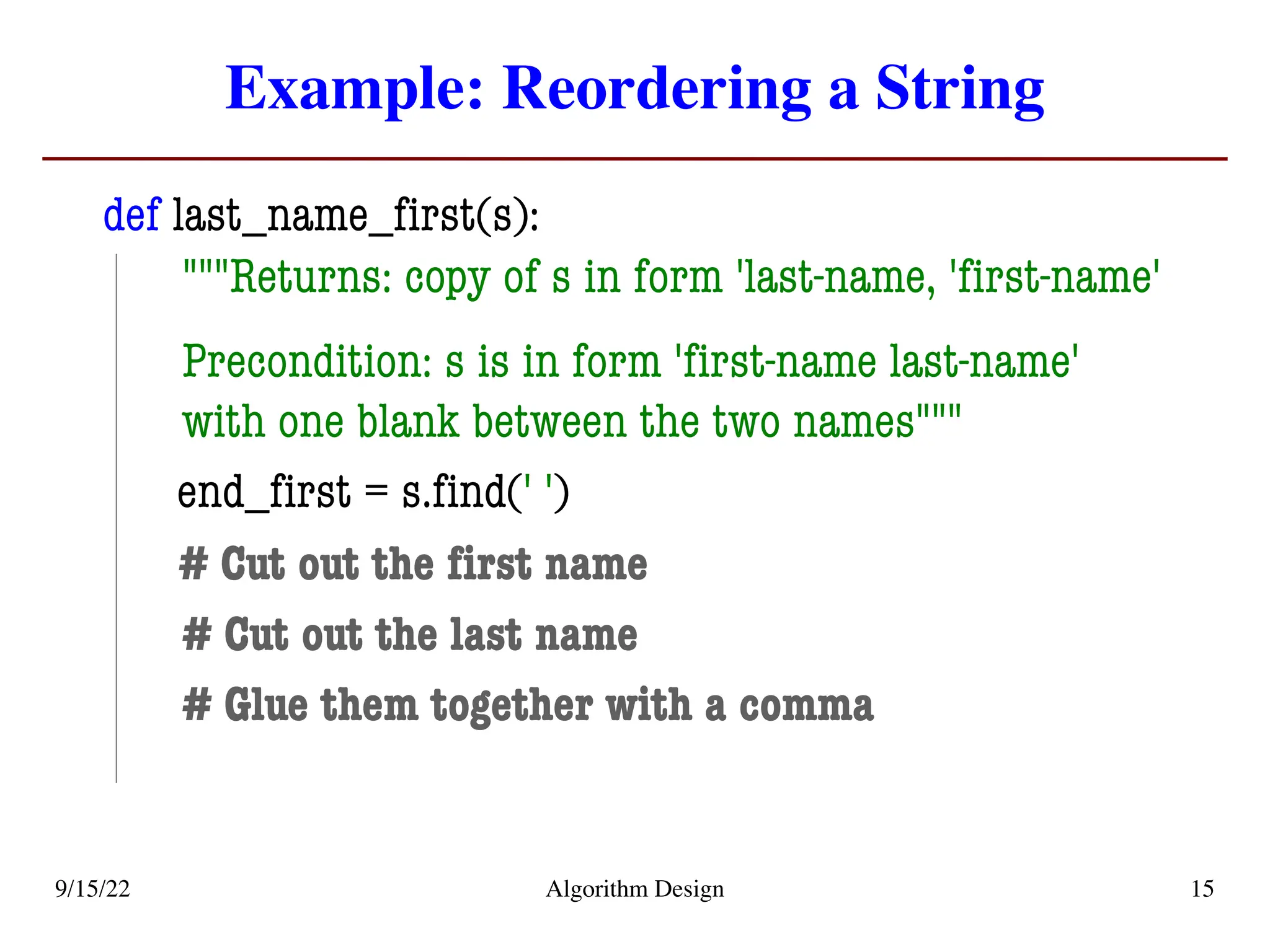
![Example: Reordering a String
def last_name_first(s):
"""Returns: copy of s in form 'last-name, 'first-name'
Precondition: s is in form 'first-name last-name'
with one blank between the two names"""
end_first = s.find(' ')
first_name = s[:end_first]
# Cut out the last name
# Glue them together with a comma
9/15/22 Algorithm Design 16](https://image.slidesharecdn.com/presentation-08-240829064055-c5297ce5/75/Python-Lecture-slides-topic-Algorithm-design-16-2048.jpg)
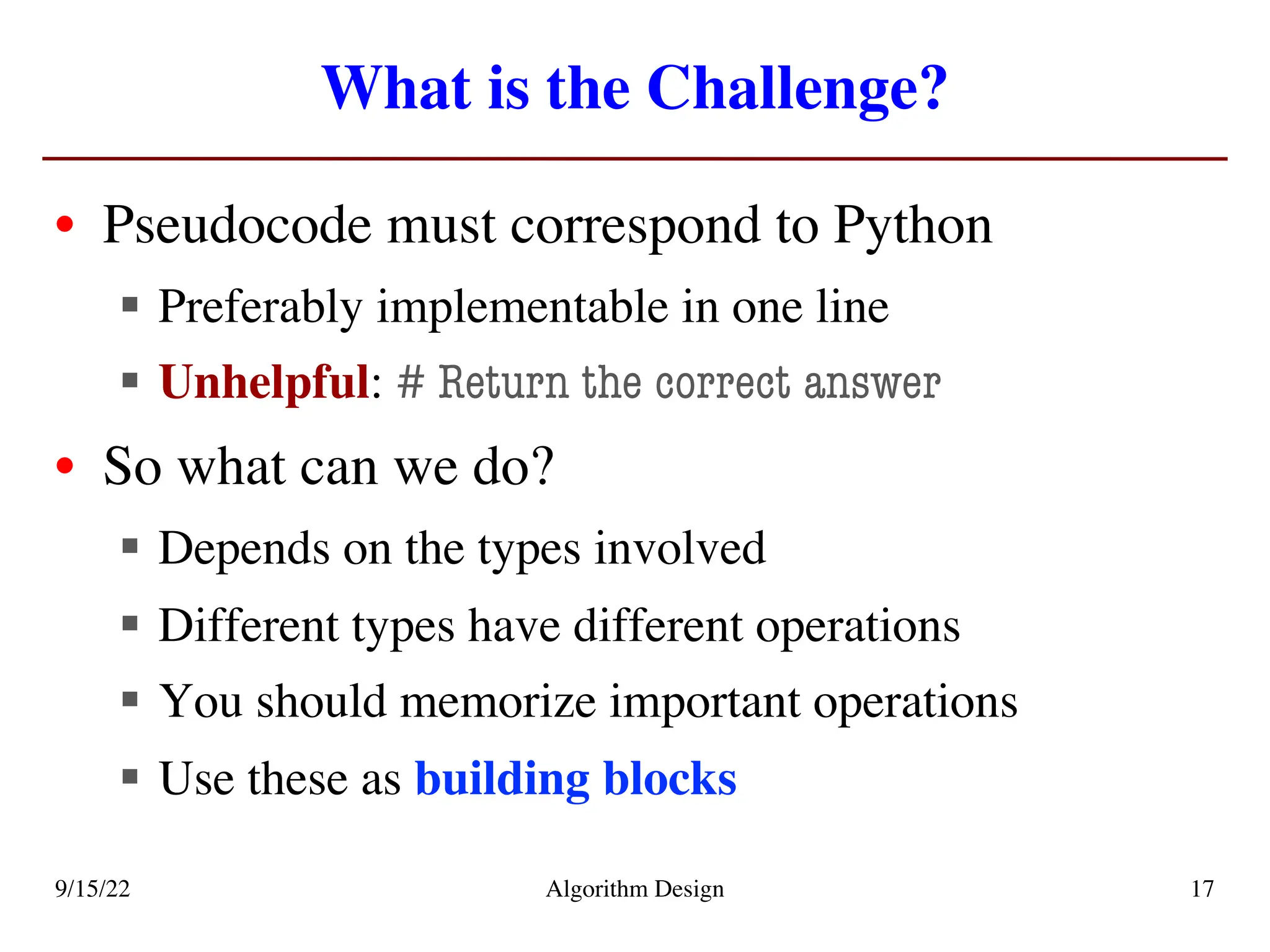
![Case Study: Strings
• We can slice strings (s[a:b])
• We can glue together strings (+)
• We have a lot of string methods
§ We can search for characters
§ We can count the number of characters
§ We can pad strings
§ We can strip padding
• Sometimes, we can cast to a new type
9/15/22 Algorithm Design 18](https://image.slidesharecdn.com/presentation-08-240829064055-c5297ce5/75/Python-Lecture-slides-topic-Algorithm-design-18-2048.jpg)

![Stubbed Returns
def last_name_first(s):
"""Returns: copy of s in form 'last-name, 'first-name'
Precondition: s is in form 'first-name last-name'
with one blank between the two names"""
end_first = s.find(' ')
first = s[:end_first]
# Cut out the last name
# Glue them together with a comma
return first # Not the final answer
9/15/22 Algorithm Design 20](https://image.slidesharecdn.com/presentation-08-240829064055-c5297ce5/75/Python-Lecture-slides-topic-Algorithm-design-20-2048.jpg)
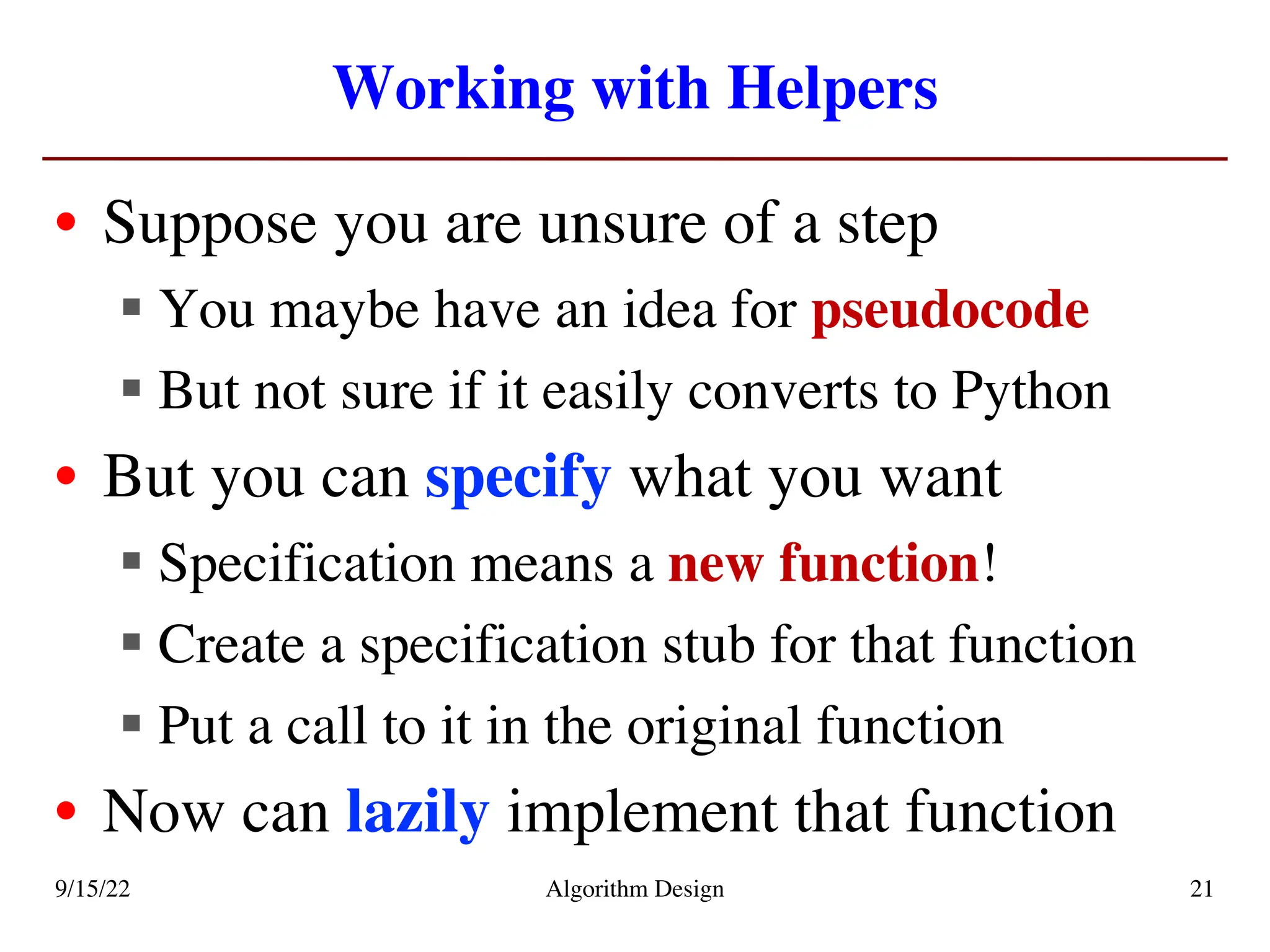
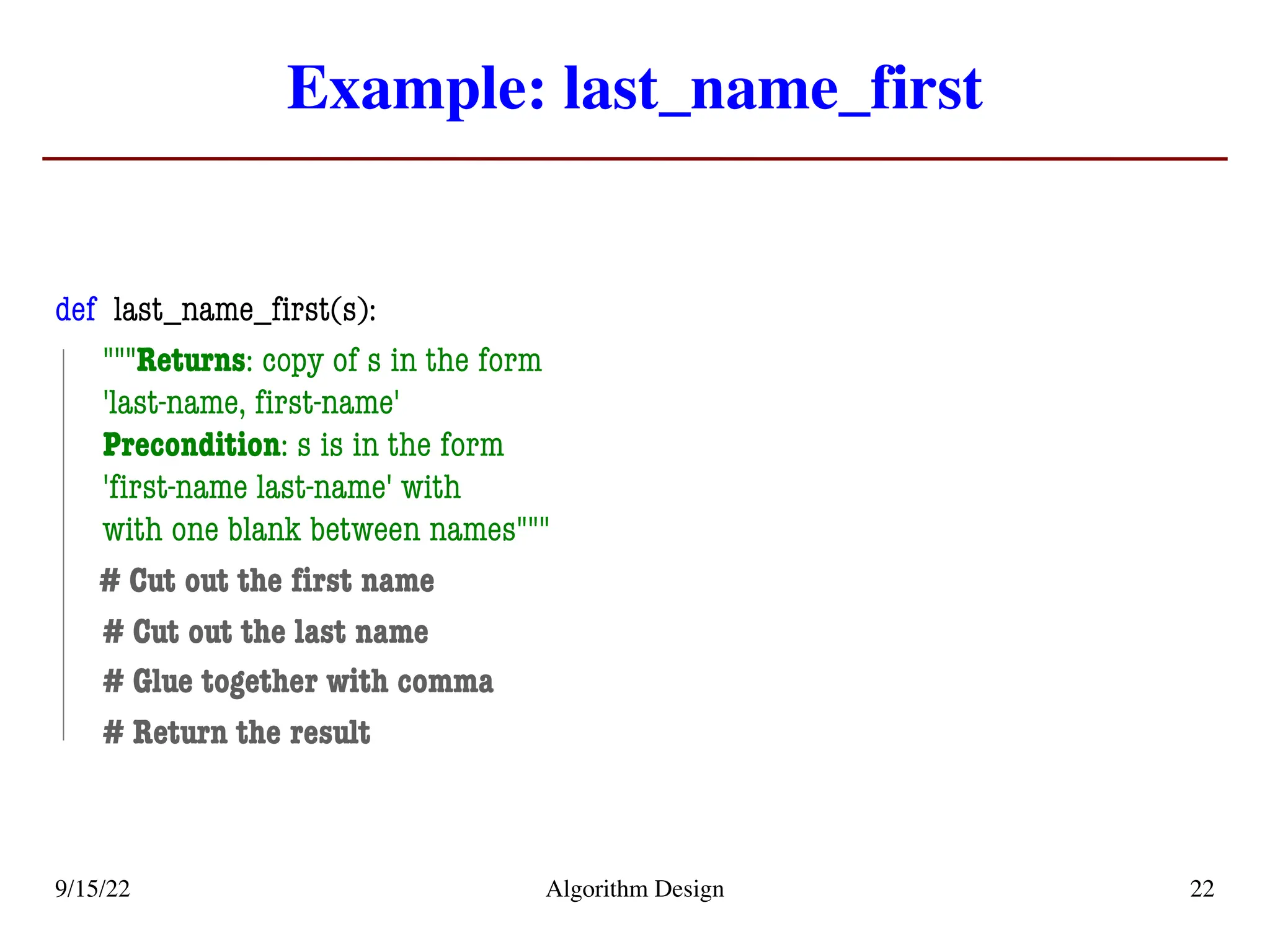
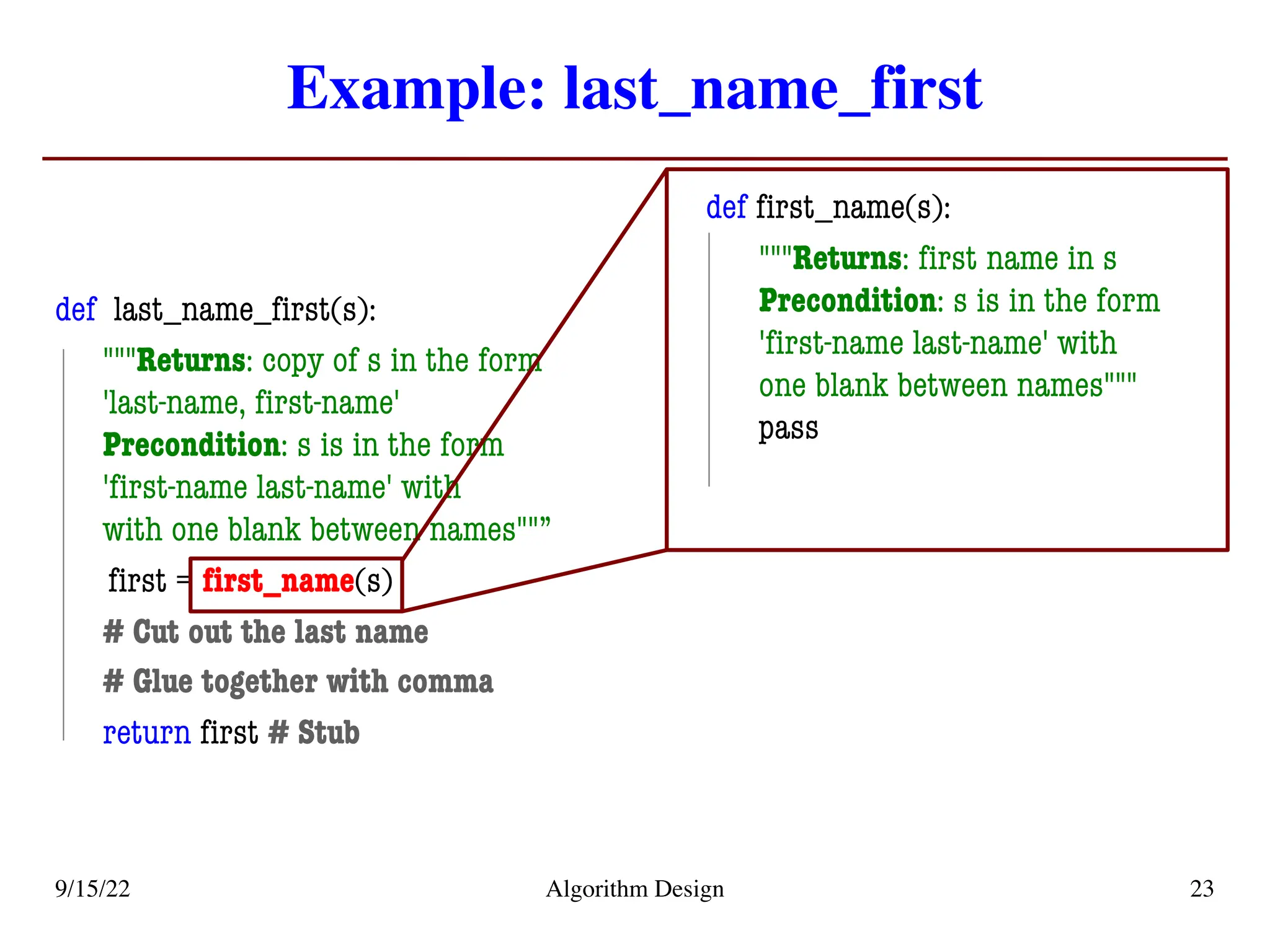
![Example: last_name_first
def last_name_first(s):
"""Returns: copy of s in the form
'last-name, first-name'
Precondition: s is in the form
'first-name last-name' with
with one blank between names""”
first = first_name(s)
# Cut out the last name
# Glue together with comma
return first # Stub
def first_name(s):
"""Returns: first name in s
Precondition: s is in the form
'first-name last-name' with
one blank between names"""
end = s.find(' ')
return s[:end]
9/15/22 Algorithm Design 24](https://image.slidesharecdn.com/presentation-08-240829064055-c5297ce5/75/Python-Lecture-slides-topic-Algorithm-design-24-2048.jpg)
